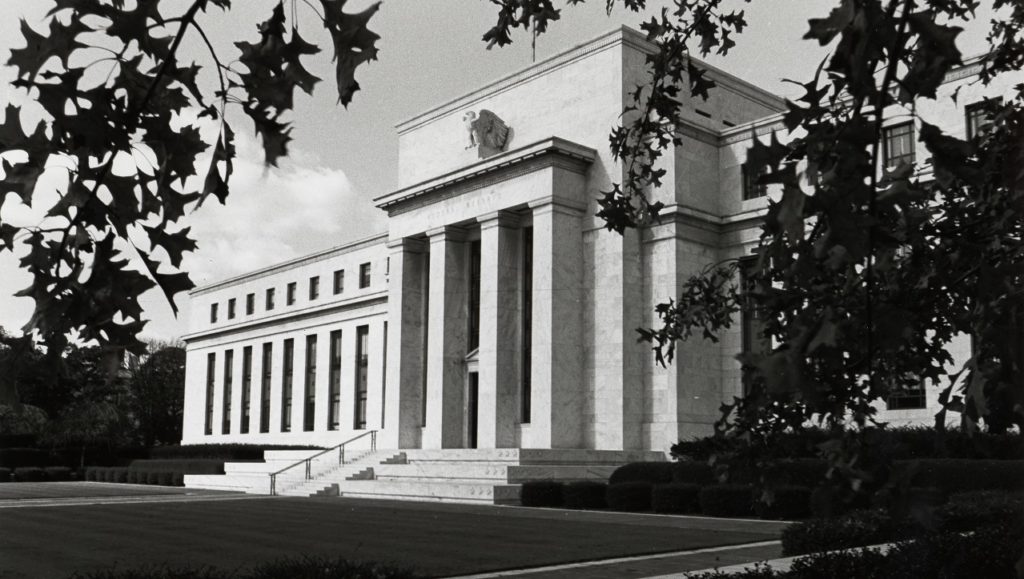Peter Schiff: The Fed Is Not Making Progress in Its Inflation Fight

The October CPI data came in a bit cooler than expected, but the market reaction was hot and furious. Peter Schiff broke down the CPI data and the market reaction to it in his podcast. Despite the spin, Peter said the Fed isn’t making any progress in fighting inflation.
The headline annual price increase came in at 7.7%. It’s the first time in quite a while we’ve seen a CPI under 8%, and it was lower than the 7.9% projection. This is the number everybody focuses on, but it’s a little misleading.
The month-on-month CPI increase was 0.4%. That was also better than expected, feeding into the perception that inflation is cooling. But the month-on-month CPI increase in September was also 0.4%. So, prices increased at the same pace in October as they did in September.
Core CPI, stripping out more volatile food and energy prices, was up 0.3% month-on-month and 6.3% on an annual basis.
Keep in mind, inflation is worse than these numbers suggest. This CPI uses a government formula that understates the actual rise in prices. Based on the formula used in the 1970s, CPI remains is closer to double the official numbers — a historically high number.
But all of the October CPI data was lower than the consensus range of projections and the markets focused on that more than the actual numbers, and the reacted with a huge rally. The Dow was up just over 1,200 points on Thursday. The NASDAQ was up 7.35% and the S&P 500 saw a 5.5% rally.
Meanwhile, the dollar tanked and bond yields collapsed. One news report called the scope of the dollar’s move “breathtaking.” The dollar index is down 6% from its September high.
Gold was up nearly $50. In fact, gold charted one-day rallies of $52, $40, and $49 in the span of five trading days last week. That’s quite unusual in the gold market.
I can’t even remember when that happened before, and I don’t think that’s insignificant. Something is going on when you see gold moves of that magnitude.”
Despite these massive moves in the financial markets, Peter called the October CPI “much ado about nothing.”
This is not good news. This does not show that the Fed is making any progress when it comes to inflation. Yes, the year-over-year number is lower than it was — 7.7. But that’s still a big number. And of course, it doesn’t even capture the degree to which prices are actually moving up. The real rate of inflation is probably double that.”
Peter said you should expect CPI data to ebb and flow.
There is no reason to believe that at some point in the near future, we’re not going to print a record-high year-over-year CPI.”
He also pointed out that annualizing the 0.4% month-on-month CPI increase we had in September and October comes to 5%. While that’s lower than the 8% rate we saw earlier this year, it is still a far cry from the Fed’s 2% target.
Nothing the Fed had done thus far is going to succeed in bringing inflation down to 2%.”
The markets now expect the next rate hike will be 50 basis points instead of 75, followed by a 25-point hike. After that, the markets think the Fed will be finished tightening.
Even if the Fed continues to hike rates, it’ll never catch up to an inflation curve this it is miles behind. Because, as I’ve been saying, the only real way to fight inflation is a two-pronged attack, which would include positive real interest rates … and we need cooperation from the US government. We need to see cuts in government spending, something that’s not going to happen. In fact, government spending is going to continue to increase, and so will the deficits that are making that spending possible.”
Peter pointed out that we still have stimulative monetary and fiscal policies with negative real interest rates and increasing budget deficits.
You’re not going to put out a fire by pouring gasoline on it.”
Peter said looking more deeply into the CPI data reveals “shocking examples” of just how little progress the Fed is making in its inflation fight. For instance, the price of food at home increased by 0.6% month-on-month. Food at restaurants was up 0.9% on the month. Energy prices rose 1.8% during October. Services charted the biggest increase since 1982.
These are numbers that are contained within this supposedly good news on CPI.”
Some prices did fall in October, including new and used cars. But why are used car prices falling?
People can’t afford to buy them!
People are spending so much money on food, they’re spending so much money on energy that they don’t have as much money left over to buy a car, used or new. And so, prices are going down. But what’s more important to most people than the price they pay to buy a car is the rate they pay to finance the purchase of that car. Because most Americans are too broke to pay cash for a car. They have to borrow the money. And auto loans are way up. So, even though car prices are down, it costs more money to have a car because the interest rate is higher on the car loan you have to take out to buy that car.”
We’re seeing the same phenomenon in shelter costs. House prices are falling, but mortgage rates (along with taxes and insurance) are spiking, keeping the cost of buying a house high.
Peter reiterated, “The Fed is not making any progress at all in reducing inflation.”
These numbers aren’t going to get any better. In fact, they’re going to get worse. Because now, you have a falling dollar that is going to accelerate the increase in consumer prices.”
A strong dollar held down import costs. A weakening dollar will raise the prices of imported goods.
But as Peter pointed out, insignificant or not, the Federal Reserve can use this CPI data to claim it is making progress in the inflation fight and ease off the tightening accelerator.
The Fed is going to claim – falsely, but it will claim – that it is making progress on inflation. And the markets will accept that. They’re not going to question that excuse. It will at least pass the smell test of plausibility because most people won’t dig deep enough to see what’s actually going on. They want to hear what they want to hear. And so, they will buy this. This is a plausible excuse for the Fed to use, especially in light of their prepared remarks [from the November FOMC meeting.]”
Peter said this is the inflation report that the markets wanted.
Because the Fed now has a plausible excuse, the markets are buying stocks, and they’re buying bonds, and they’re dumping dollars, and they’re buying gold. But the reality of this report means that the Fed is in the process of pivoting even though it’s not even close to winning its fight against inflation. And it’s ultimately going to do a hard pivot even as the inflation rate accelerates and makes new highs, because the recession that we are already in is going to get much worse.”
In this podcast, Peter also talked about the midterm elections and the bitcoin meltdown.
Call 1-888-GOLD-160 and speak with a Precious Metals Specialist today!
Buka akaun dagangan patuh syariah anda di Weltrade.
Source link







